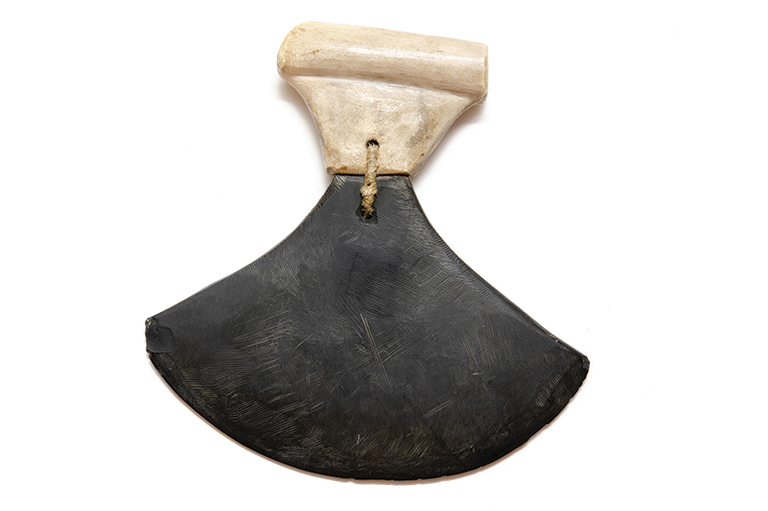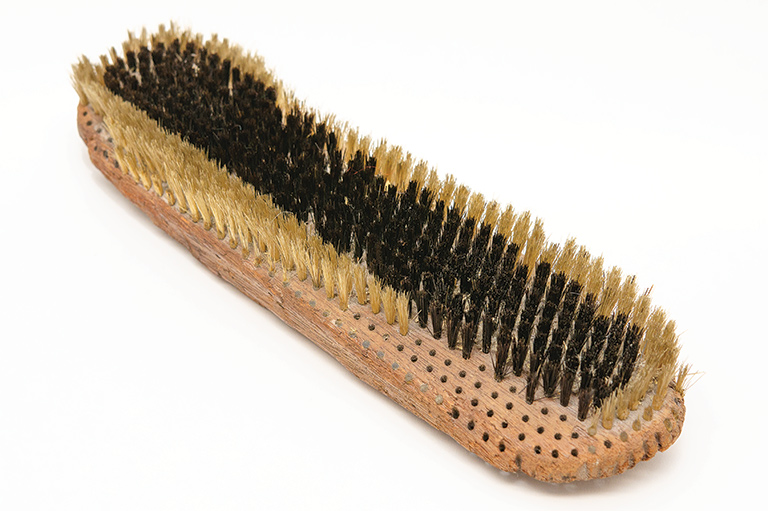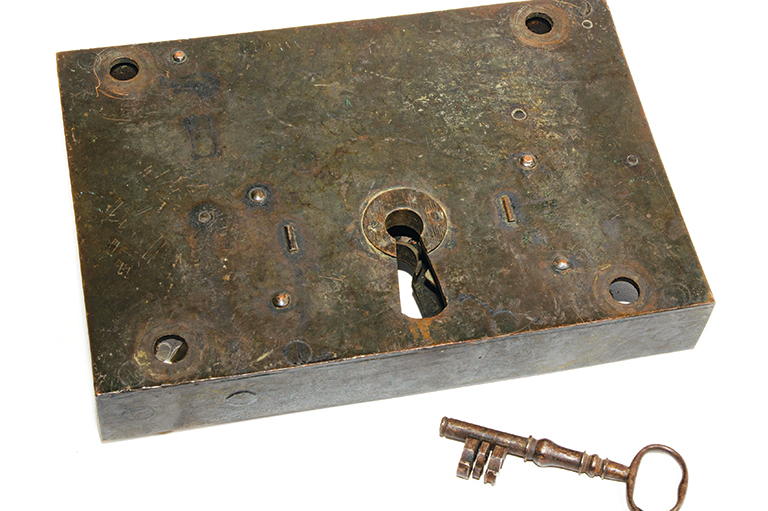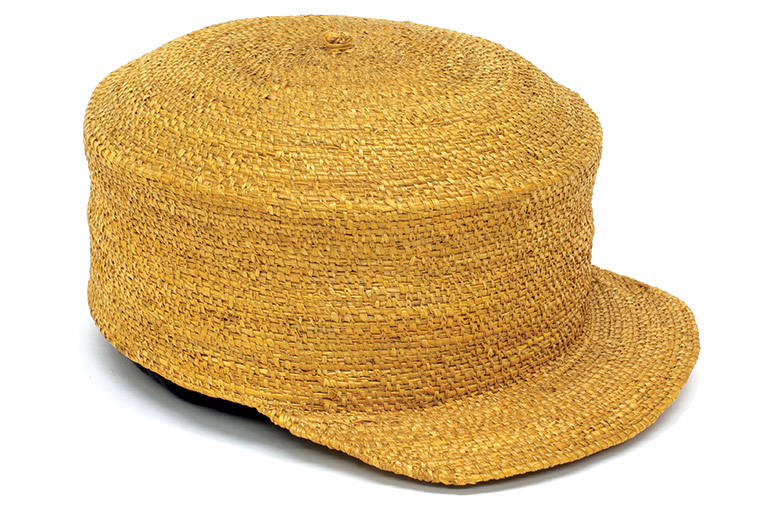As Sharp As Ever

An ulu is a remarkable multi-purpose tool that’s sometimes referred to as a woman’s knife. Uluit — as they are known in the plural form — are an important part of Indigenous Arctic material culture, with varieties from Russian Aleut to Alaskan Yupik, Canadian Inuit, and Kalaallit (Greenlandic Inuit) peoples.
Uluit can be used to scrape and to process skins, to chop meat, and to make clothing. There are different sizes and styles for these varying tasks, but all have a semicircular blade plus a handle made from bone, ivory, or wood.
With 7 uniquely curated newsletters to choose from, we have something for everyone.
This ulu’s cutting edge was made from slate, a type of stone that was ground to a sharp edge and drilled to affix a handle. Metal ulu blades did not appear only after the arrival of Europeans; numerous examples have been found that were made from local copper deposits or from meteoric iron from Greenland.
Today uluit are still an important part of traditional activities. But they also make great pizza cutters or general-purpose kitchen knives.
Advertisement
We hope you’ll help us continue to share fascinating stories about Canada’s past by making a donation to Canada’s History Society today.
We highlight our nation’s diverse past by telling stories that illuminate the people, places, and events that unite us as Canadians, and by making those stories accessible to everyone through our free online content.
We are a registered charity that depends on contributions from readers like you to share inspiring and informative stories with students and citizens of all ages — award-winning stories written by Canada’s top historians, authors, journalists, and history enthusiasts.
Any amount helps, or better yet, start a monthly donation today. Your support makes all the difference. Thank you!
Themes associated with this article
Advertisement
You might also like...
Save as much as 40% off the cover price! 4 issues per year as low as $29.95. Available in print and digital. Tariff-exempt!









